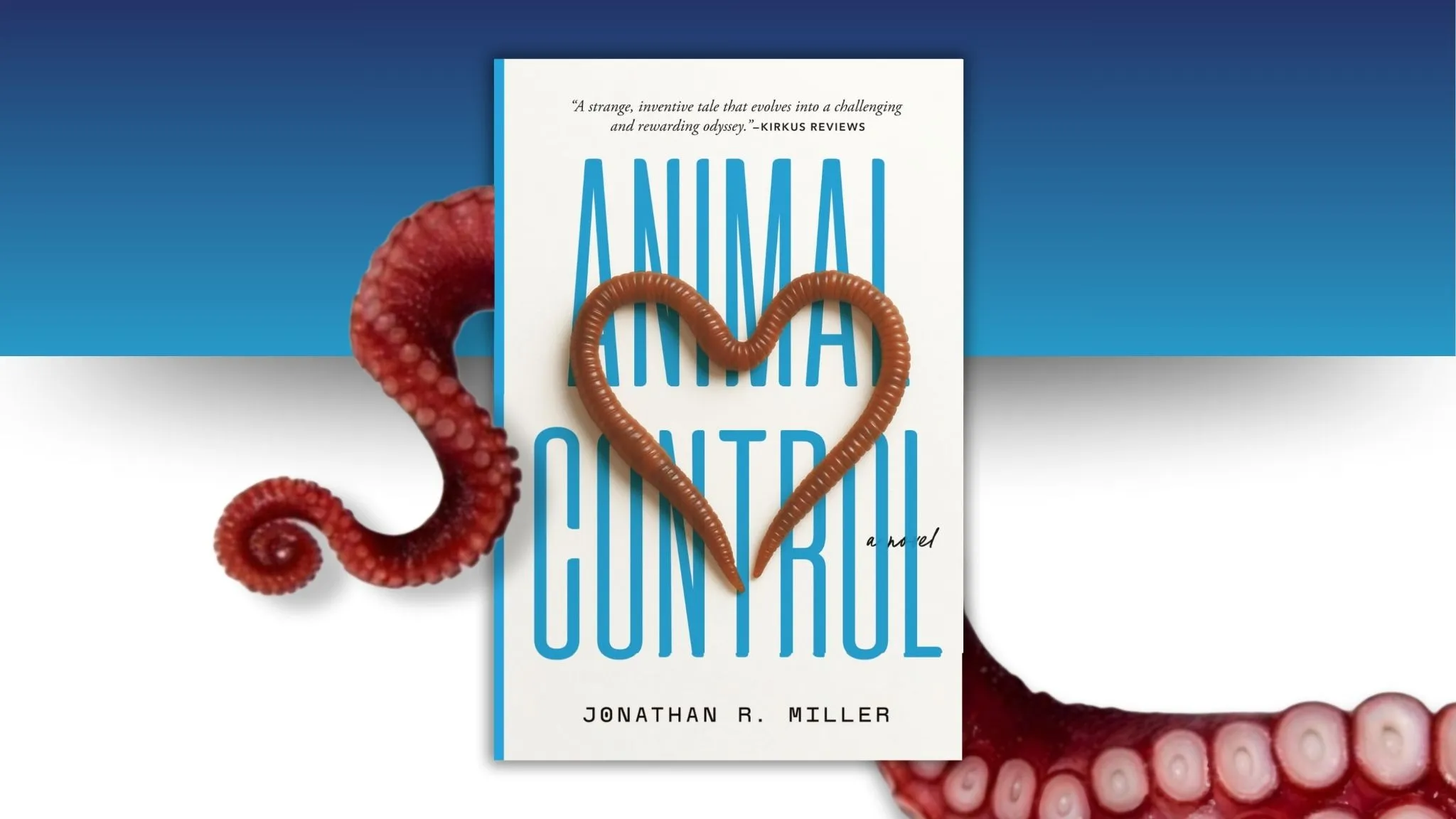Animal Control by Jonathan R. Miller
Jonathan R. Miller’s Animal Control is a bold, cerebral and unnervingly intimate exploration of what happens when the need to make the world better collides with the corruptive pull of control. Set in San Jose, this story follows 17-year-old Shay Garner, a young woman whose moral compass starts out strong but spins wildly once she gains an impossible power — the ability to bend the will of living beings.
At first glance, Shay appears to be a familiar protagonist. She and her best friends, Opal and Santana, run an underground club called SOS, dedicated to fighting social injustice. Their causes are idealistic and human: oil drilling, corruption, inequality.
But when Shay encounters Corvus P. Capra, a black-clad figure who leaves behind a strange clamshell device called the “bivoxis,” her activism takes a chilling turn. The device grants her the power of “animal control,” also known as “wildshaping” or “crittermancy.” Shay can implant wants or needs into others, overriding their free will entirely.
This premise could have easily slipped into superhero territory, but Miller’s handling of it is far more psychological and unsettling. The novel adopts a tone reminiscent of a fever dream — introspective, philosophical and violent in ways that feel both justified and horrifying.
Shay’s first experiments on insects and mice read as scientific curiosity, but as she moves to humans, including a baby and eventually her own mother, the line between justice and tyranny evaporates.
What makes this particularly powerful is how Miller refuses to sensationalize Shay’s fall. He treats her decisions as deeply human, shaped by loneliness, frustration and the desire to matter.
Her power is an extension of what she already wanted — to change things. The tragedy lies in how completely that power consumes her.
The Alignment of Trine and the Birth of Calafia
When Corvus returns to name Shay “the Reach,” Opal “the Foundation” and Santana “the Firmament,” Animal Control steps into a realm of myth and theology.
This trio, collectively known as the Alignment of Trine, represents an equilibrium of impulse, conscience and structure. They are chosen to carry forward a new movement called Calafia, an audacious plan to reshape society based on their eleven moral tenets.
The mythos deepens when the girls are summoned to the sea cave of Delphis, a 91-year-old dolphin suspended in a sphere. Here, the story merges speculative science and mysticism, introducing the Congress of Griffons, a coalition of highly intelligent animals who created the bivoxis.
It’s bizarre, yes, but also strangely elegant — a fusion of biotechnology, collective consciousness and moral philosophy.
Through the Congress and its leader, Delphis, Miller explores the idea that intelligence and ethics are not uniquely human. This framing forces the reader to question what civilization really means. Is it a hierarchy? Is it empathy? Or is it the illusion that our systems are just because we built them ourselves?
The execution of Calafia in Sacramento is a haunting allegory for revolution gone wrong. Shay’s team seizes control of government structures, not through violence at first, but through strategic manipulation.
When the novel’s philosophical tension reaches its peak, Miller asks, without ever answering directly, whether saving the world justifies the sacrifice of self — or of others. Shay’s decline is both physical and spiritual, a withering reflection of the cost of forcing change upon an unwilling world.
Themes of Power, Accountability and Evolution
At its heart, Animal Control is a study of will. The idea of “Anifluence,” as Corvus calls it, is intoxicating — an ability to rewrite desire itself. But Miller’s focus isn’t on spectacle. It’s on consequence.
The story dismantles the myth of righteous power by showing how easily even noble intentions can rot from within. Shay’s choices echo through her relationships, particularly with Opal, whose moral grounding keeps her tethered to her humanity, and with Santana, whose aggression mirrors Shay’s growing radicalism.
The novel’s thematic framework is elegantly constructed around five pillars: control, accountability, cost, community and evolution. Each layer complicates the others.
For instance, Shay’s conviction that she can fix the world contrasts with Delphis’s warning that “a failure converted into something physical, written into nerve endings” is inevitable. The suggestion that change requires pain, yet must avoid cruelty, forms the paradox that defines Shay’s journey.
Miller also shines in his use of technology as metaphor. The bivoxis, the Shadelink and the Corvus Suit are not just devices … they are manifestations of communication, empathy and embodiment. They bridge human and animal consciousness, suggesting that progress demands synthesis, not dominance.
And then there are the Calafia Tenets, eleven simple but profound moral statements that function as the novel’s ethical backbone. “Don’t make pain the point.” “Silence is not neutrality.” “No system is sacred, not even ours.”
These aren’t slogans — they’re warnings. Each one captures the fragility of any ideology that claims to know what’s best for everyone.
Final Thoughts
Animal Control is a daring and disquieting novel that refuses easy categorization. It’s part science fiction, part dark philosophy and part coming-of-age tragedy.
It reads like a thought experiment wrapped in an apocalypse. Jonathan R. Miller balances cerebral depth with raw emotion, crafting a story that lingers long after the final page.
Shay Garner’s descent is painful to witness, yet impossible to look away from. In her, Miller has created a protagonist both monstrous and deeply human, a reflection of our own contradictions.
This book is for those willing to wrestle with uncomfortable truths about morality, responsibility and power. In the end, Animal Control is less a story about taming beasts than about recognizing the one that lives inside us all …
About Jonathan R. Miller:
 Jonathan R. Miller is an author of “magical realism” literary fiction novels, as well as sci-fi thrillers featuring diverse, complex characters.
Jonathan R. Miller is an author of “magical realism” literary fiction novels, as well as sci-fi thrillers featuring diverse, complex characters.
Miller was born in Illinois, lived in New Mexico for most of his childhood, and then became a California transplant after undergraduate school at Stanford University. He was an 8th-grade teacher for 7 years in the Oakland public school system and has worked as a writer/marketer in the San Francisco Bay Area ever since.
Miller’s own multiracial heritage has had a strong influence on his thought processes and writing approach. His novels deftly explore issues of identity while providing storylines that are layered, thought-provoking and moving.





